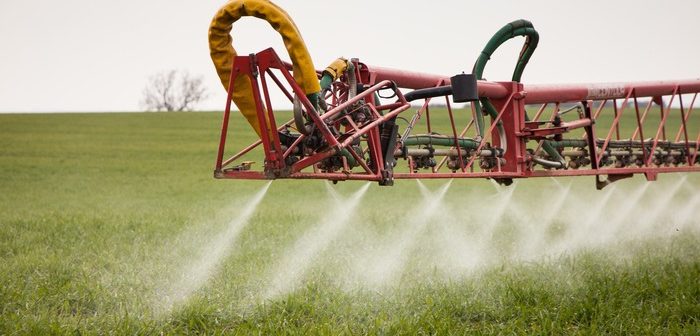Consider your spring herbicide programme carefully to avoid carry-over of any residual activity from spring applied sulphonyl urea (SU) herbicides, particularly if it remains dry and then turns wet later on in the season, is the advice from leading crop production specialists Hutchinsons.
“This is particularly the case for those growers who are thinking about increasing the areas of cover crops they will grow next summer or for those thinking of coming back into or extending their oilseed rape acreage. The value of both crops is high so it’s best to avoid compromising their establishment if avoidable,” says Dick Neale, technical manager.
“It doesn’t mean holding off controlling the difficult weeds, but look at how ‘softer’ sulphonyl ureas (SU’s) could work whilst still controlling the weeds without the long tail of residuality.”
“It’s the fine details that will matter.”
He explains: “We used to apply these products in the autumn and issues rarely occurred, but as their efficacy on black grass has declined they are now increasingly used to tackle wild oats, bromes and ryegrass with a spring application.”
“Wild-oats can emerge anytime from February to April and it is when herbicides are applied later to these crops that issues can be seen in following covers and oilseed rape.“
“Also broad leaved weed SU’s, for example in Ally Max ( metsulfuron methyl and tribenuron methyl), covers a whole range of weeds and has an extended growth stage on its label so is a popular option – but it is also very persistent in the soil.”
He suggests an alternative to this would be to use tribenuron methyl and thifensulfuron as a mix with no metsulfuron. “Although there is a reduced weed spectrum – there is no where near the same levels of persistence.”
“Other options would be products with actives containing florasulam and fluroxpyr or florasulam and hauloxyfen-methyl,” he says.
Avoid stacking
Mr Neale notes it is also important to avoid stacking herbicides with the same active as it is easy to reach damaging levels this way without realising it.
“You want to avoid levels of DFF building up as it is very residual and can form a pencil thin line in the top of the soil. When a new crop meets this it can really knock the vigour out of it.”
“It’s not difficult for this to happen without realising it,” says Mr Neale. “For example, if a pre-emergence application of Liberator (flufenacet and diflufenican) goes on at 0.6l/ha this contains 60gms of DFF.”
“If using a split label rate then it is possible to go back on post-emergence six weeks later, of which is perfectly legal and safe to do, with 0.3l/ha (30gms DFF) making that a total of 90gms DFF.”
“However, if Crystal (flufenacet and pendimethalin) is also being used in the programme, DFF is often added to this, that adds in another 50gms of DFF which if then followed up with 0.6l/ha Liberator takes the amount of DFF up to 110gms.”
“As its been dry it’s possible that one of the applications hasn’t worked, so black-grass might be starting to come through, which means another 0.3l/ha Liberator (30gms DFF) is added to the mix, which would bring the total amount of DFF up to a total of 140gms!”
“This shows how important it is to scrutinise the partner contents of all products and actively utilise product sequences that reduce the overall loading of persistent actives. For example, flufenacet can be sourced with picolinafen or pendimethalin and of course as a straight active.”
Avoiding residual herbicide carry over in an agrocecological farming situation.
“When establishing cover crops within an agroecological farming situation, we now have enough experience to know that everything has to be in your favour in the summer to get covers away well – adequate moisture, timely harvest, effective establishment technique – we can’t guarantee that all of those come together every year, so we don’t need herbicide residues adding another potential impact on success,” says Ed Brown, head of agroecology at Hutchinsons.
“It’s important that all cultural controls should have been employed meaning that a winter crop is only considered when the grassweed burden is at a manageable level and doesn’t require huge stacks of residual, therefore avoiding the DFF issue.”




